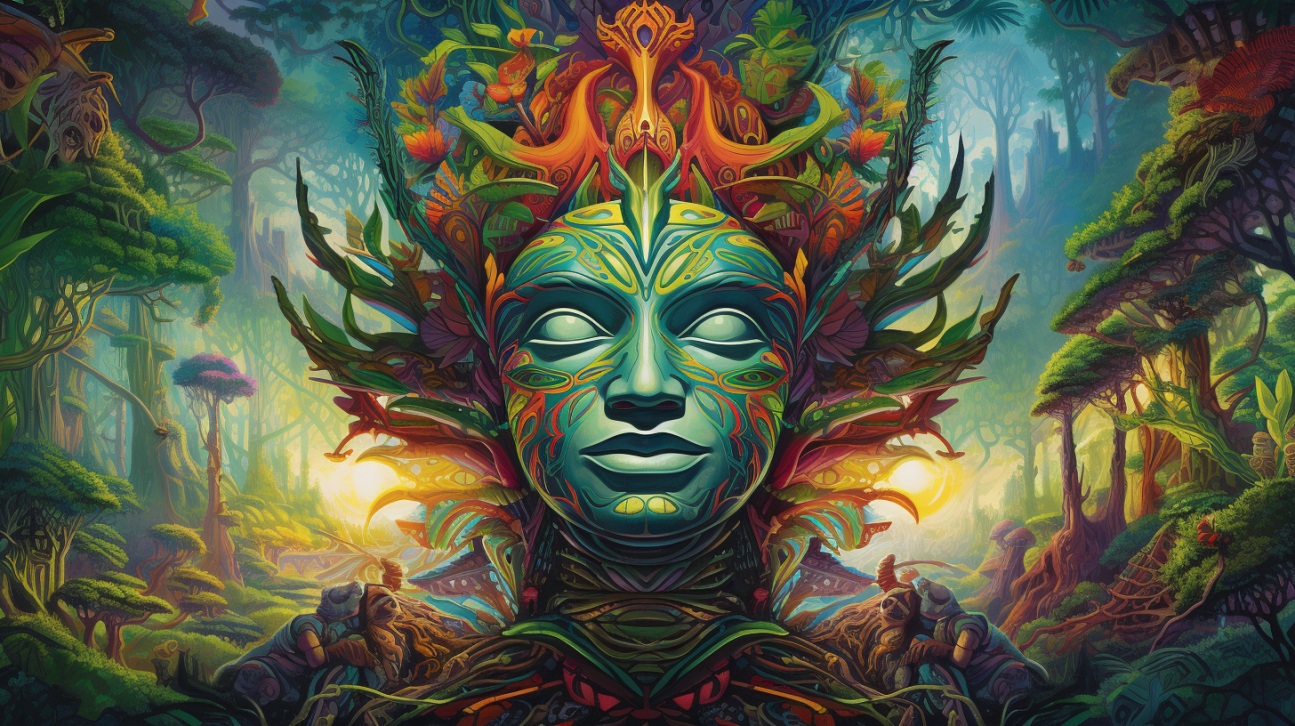Ayahuasca is a traditional psychedelic brew from the Amazon that has been used for centuries in shamanic healing rituals.
Research is now exploring its potential therapeutic benefits for mental health and addiction.
Key Facts:
- Ayahuasca contains DMT, a hallucinogenic compound, along with MAOIs from the vine Banisteriopsis caapi. The MAOIs allow the DMT to be orally active.
- It produces an intense psychedelic experience lasting 4-6 hours, with emotions intensified and visionary effects.
- Studies show it affects areas of the brain involved in emotions, memories, consciousness, and introspection.
- Small studies suggest benefits for depression, anxiety, PTSD and addictions to alcohol, nicotine and cocaine.
- It appears relatively safe physiologically and not addictive, though those with psychotic disorders may risk adverse effects.
- Legal restrictions have limited research, but scientists argue its potential merits further studies.
Source: Curr Neuropharmacol
The Psychedelic Brew of Ayahuasca
Ayahuasca is a traditional psychedelic plant medicine from the Amazon basin used for shamanic healing and religious rituals.
It is a brew made from the Banisteriopsis caapi vine containing MAO-inhibiting beta-carboline alkaloids, usually mixed with the leaves of the shrub Psychotria viridis which contains the primary psychoactive component DMT.
DMT is structurally similar to serotonin and other tryptamines like psilocybin.
It acts mainly through serotonin 5-HT2A receptor agonism to produce its psychedelic effects.
However, when taken orally on its own DMT is not active due to breakdown by stomach MAO enzymes.
Ayahuasca combines DMT with beta-carbolines that allow the DMT to reach the brain.
This synergistic combination produces an intense psychedelic experience very different from smoked or IV DMT.
Effects come on around 40 minutes after drinking ayahuasca, peaking from 60-120 minutes and lasting around 4-6 hours.
Subjectively, emotions feel intensified, memories resurface vividly, and visionary effects occur with eyes open or closed.
Ayahuasca Effects in the Brain
Neuroimaging and EEG studies are starting to show how ayahuasca affects the brain.
Brain areas activated include the frontal and paralimbic cortices, amygdala and parahippocampal gyrus, all involved in processing emotion and memory.
Changes are seen in sensory areas which may underlie the vivid visions and synaesthesia.
Decreased connectivity is observed between frontal and posterior brain regions, leading to an overall change in consciousness away from ordinary cognitive control toward limbic system processes.
This provides a window into how psychedelics alter the mind.
Potential Psychiatric Uses of Ayahuasca

Research is examining the potential of ayahuasca to help treat depression, anxiety, PTSD and substance addictions.
Small randomized trials and observational studies of ayahuasca church members show promising results.
For depression, studies indicate antidepressant effects of the beta-carbolines and DMT working through serotonin receptor agonism and other mechanisms.
Testimonials suggest ayahuasca provides spiritual insights that give meaning and hope.
For anxiety, initial clinical data found acute anti-panic effects.
Possible mechanisms include trace amine associated receptor activation by DMT and increased neurogenesis from 5-HT2A agonism.
In addiction, studies show ayahuasca users have less alcohol and cocaine use compared to controls.
It may work by reducing dopamine in reward pathways and increasing reflection on life choices.
Overall, ayahuasca shows potential as an adjunct to psychotherapy.
By enhancing introspection and access to emotions, it could help address core issues fueling conditions like addiction and depression.
Ayahuasca: Safety Profile & Drug Interactions
Physiologically, ayahuasca appears relatively safe at traditional doses in most people.
Acute cardiovascular effects include moderately increased heart rate and blood pressure.
Potential side effects include nausea, vomiting, diarrhea and anxiety during the intense psychedelic experience.
Use of certain antidepressants like SSRIs with ayahuasca can risk serotonin toxicity.
Anti-addiction drugs, antihistamines and other serotonergic medications could also have interactions.
Those with heart conditions or psychotic disorders should avoid it due to risks of exacerbation.
While not considered addictive and with little evidence of toxicity, recreational use without proper safeguards and screenings may be hazardous.
Any benefits appear most likely when taken in a structured ritual setting.
The Path Ahead: Additional Ayahuasca Research
The spiritual wisdom of indigenous peoples suggests healing potentials for ayahuasca.
Modern science is now collecting clinical evidence in support of such traditional uses.
However, current legal restrictions greatly limit research.
Scientists argue regulations should be relaxed so its therapeutic potentials and risks can be rigorously explored.
Larger studies are needed, though results so far suggest judicious medical use could be warranted.
As our repertoire of psychiatric treatments remains limited, controversial modalities like ayahuasca deserve unbiased investigation.
Just as psychedelic research paved the way for antidepressants in the 1950s, compounds like ayahuasca may spur useful new directions in mental health treatment today.
References
- Study: Ayahuasca: psychological and physiologic effects, pharmacology and potential uses in addiction and mental illness
- Authors: Jonathan Hamill et al. (2019)







